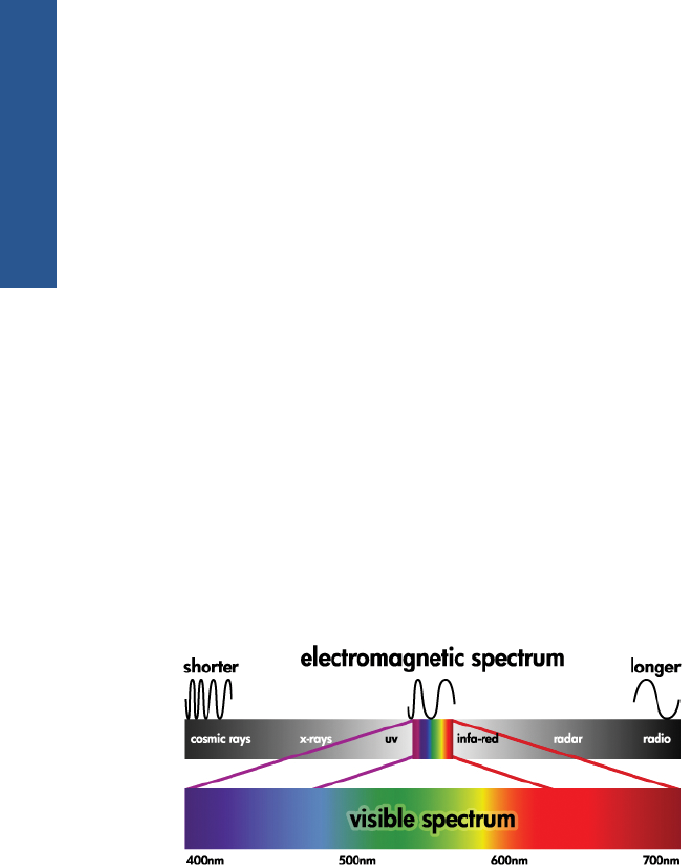
What is color?
We see the world around us as steeped in color, where color is in the first instance simply an aspect
of how we experience our environment. Color is therefore subjective. Upon further inspection we find
that our color experiences are closely related to brain activity that is triggered by signals sent to it by
our eyes. These signals undergo a complex and highly interlinked sequence of processing stages
that make the relationship between what our eyes emit and what we experience anything but direct.
The signals sent by the eye depend on the light-sensitive cells that line the back of our eyes, and they
belong to three types, each sensitive to electromagnetic radiation of different physical properties
(wavelengths). Such electromagnetic radiation is called light and objects appear to have certain
colors because of how they interact with light (by emission, reflection, absorption, transmission,
scattering, etc.).
Our individual experiences of color are also affected by our previous experiences and memories and
by the way in which we put our experiences into language. Finally, environmental factors such as
changes in lighting, scene content or the proximity of other colors also have an effect, which makes
the way in which we view a given display or print an essential part of the colors we will see.
Differences in all these aspects (from physiological differences between people, to differences in their
past experiences, memories and linguistic tendencies) can result in people talking about colors
differently even in response to the same light reflected from an single object. Nonetheless there are
also many similarities between how individuals experience color and it is possible to make very
specific judgments about it that others will also agree with when care is taken in the process. In
conclusion we can say that color results from the interaction between light, objects and a viewer,
which makes it a very complex and to a large degree subjective phenomenon.
The problem: color in the computer world
Color imaging devices such as printers, displays, projectors and televisions create colors by different
means and by using different materials (colorants). Displays, for instance, use colorants that emit red
(long wavelength), green (medium wavelength) and blue (short wavelength) light, where outputting a
white color requires the full use of all three colorants and black requires that none of them be used
(i.e. that no light be emitted). Devices that use light emitting colorants are called additive, because the
light from them is added together before it enters a viewer’s eyes. Printers, on the other hand, use
materials that absorb parts of the light that shines on them and because of this absorption, they are
called subtractive. Typical prints use cyan (red absorbing), magenta (green absorbing) and yellow
(blue absorbing) inks as well as an additional black ink that absorbs light at all wavelengths. To get
white using a printer requires not absorbing any of the light that illuminates a piece of paper and to
get black, all of the inks need to be used to absorb all of the light that is present.
60 Chapter 6 Color management ENWW
Color management


















